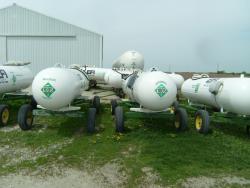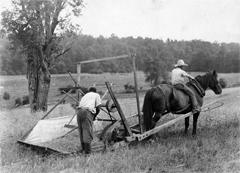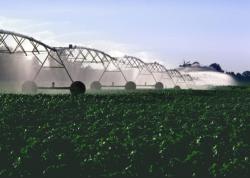In 1932, J. O. Smith, Agricultural Engineer at Delta Branch Experiment Station in Stoneville, MS, attached a small anhydrous ammonia cylinder to a plow in such a manner that the NH3 was released in the soil. The plow, a Georgia Stock, was pulled by a gray mule named Ike. This was the first known use of anhydrous ammonia as a soil-applied crop fertilizer. The crude apparatus and the anhydrous ammonia it applied provided a much needed source of nitrogen for the otherwise rich alluvial soils of the Mississippi Delta.
ASABE



A crucial step in the evolution of modern plant agriculture was the development of low-cost, energy-efficient greenhouse structures that provide optimum growing conditions year-round. In 1964, Professor William J. Roberts developed the first air-inflated double-layer polyethylene greenhouse covering system at Cook College, Rutgers University.

American Society of Agricultural Engineers Founded in this Building December 27, 1907

Agricultural Aviation Began In 1921 When C. R. Neillie Got A Military Plane To Dust Catalpa Trees Near Troy, OH. In 1922 B. R. Coad And C. E. Wollman Began Research At Tallulah, LA To Control Boll Weevils In Cotton. They Developed Equipment Using Venturi Induction, Ram Air Pressure And Hopper Agitation. G. B. Post And Wollman Made The First Commercial Dust Applications In Macon, Ga In 1924. In 1925, 18 Aircraft Treated 60,000 Acres Of Cotton Across The South. In 1928, Delta Air Service Was Organized.

McCormick was born on the 620-acre farm known historically as “Walnut Grove Farm” in 1809. He built the first practical grain reaper, which was successfully demonstrated in a field of oats owned by John Steele in nearby Steeles Tavern in 1831.





